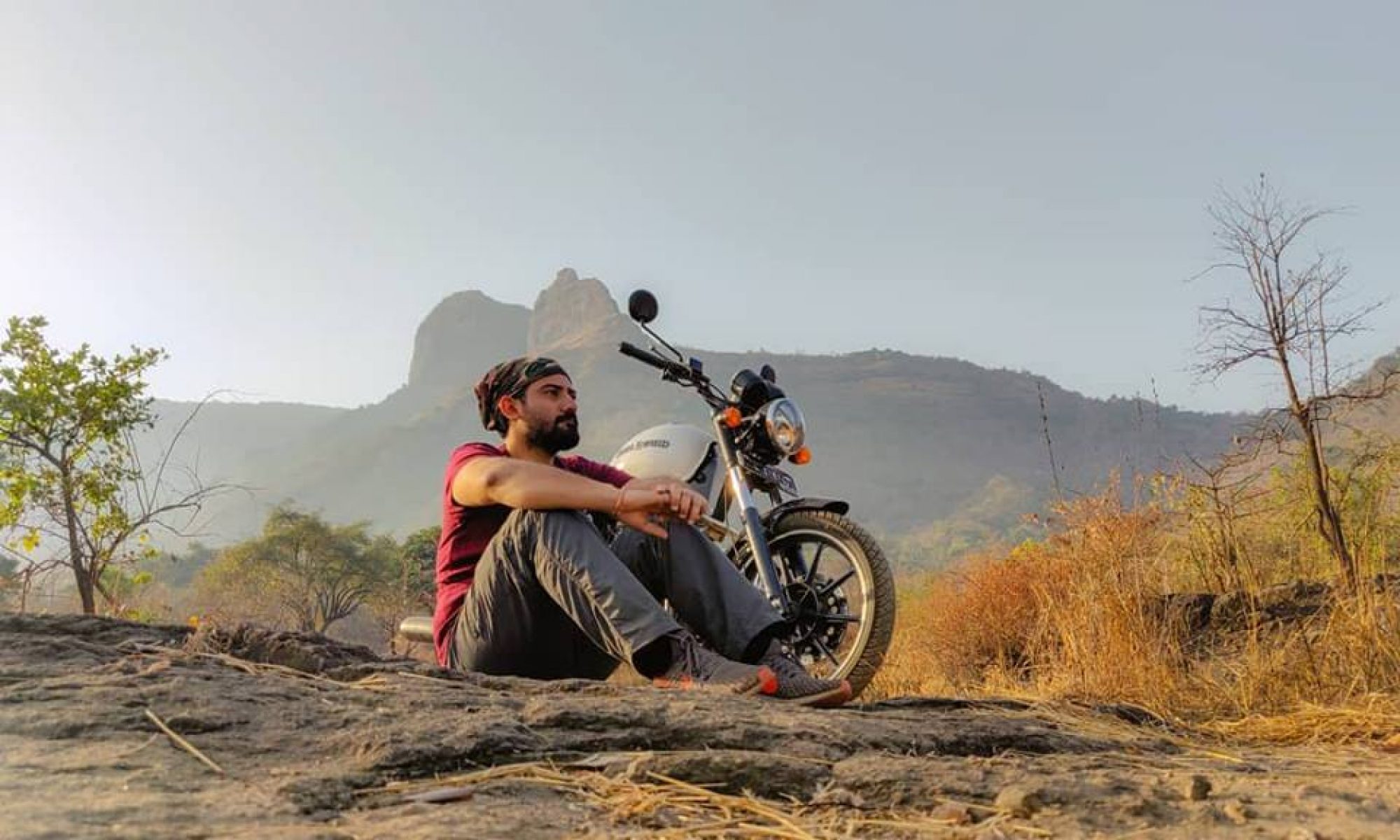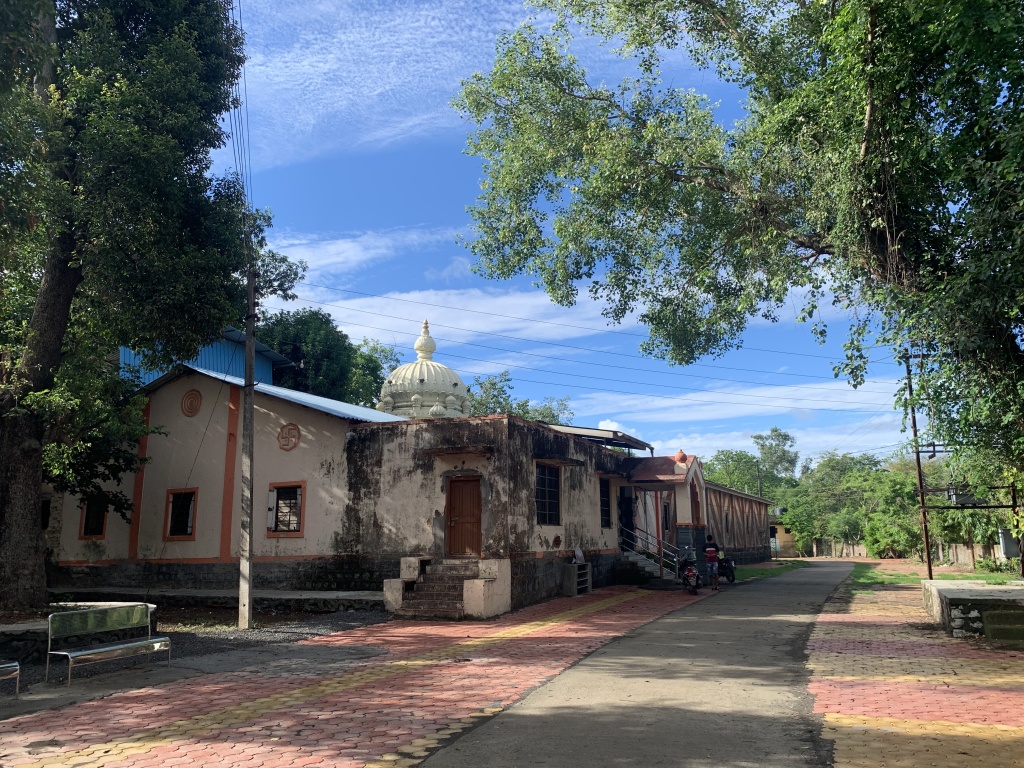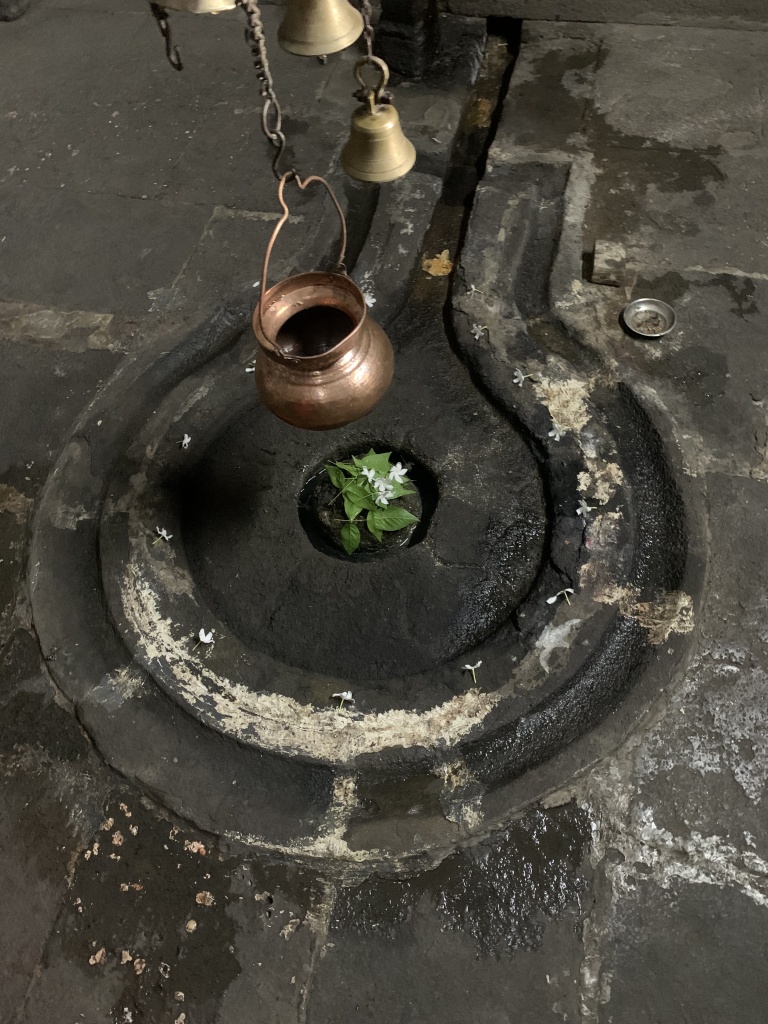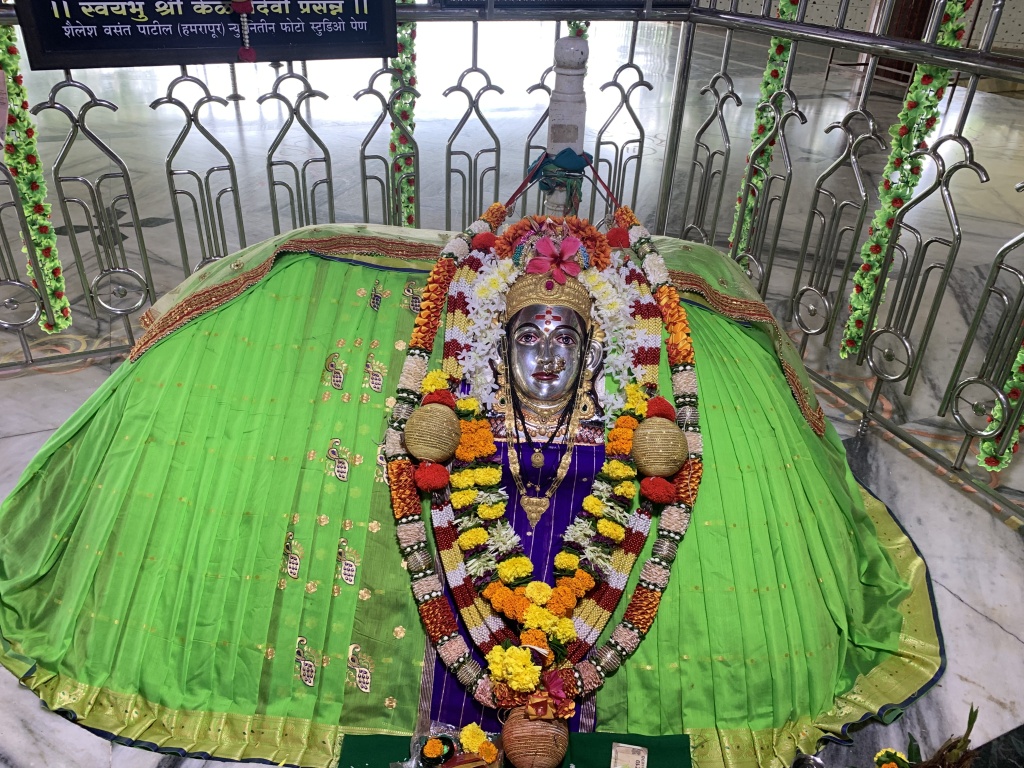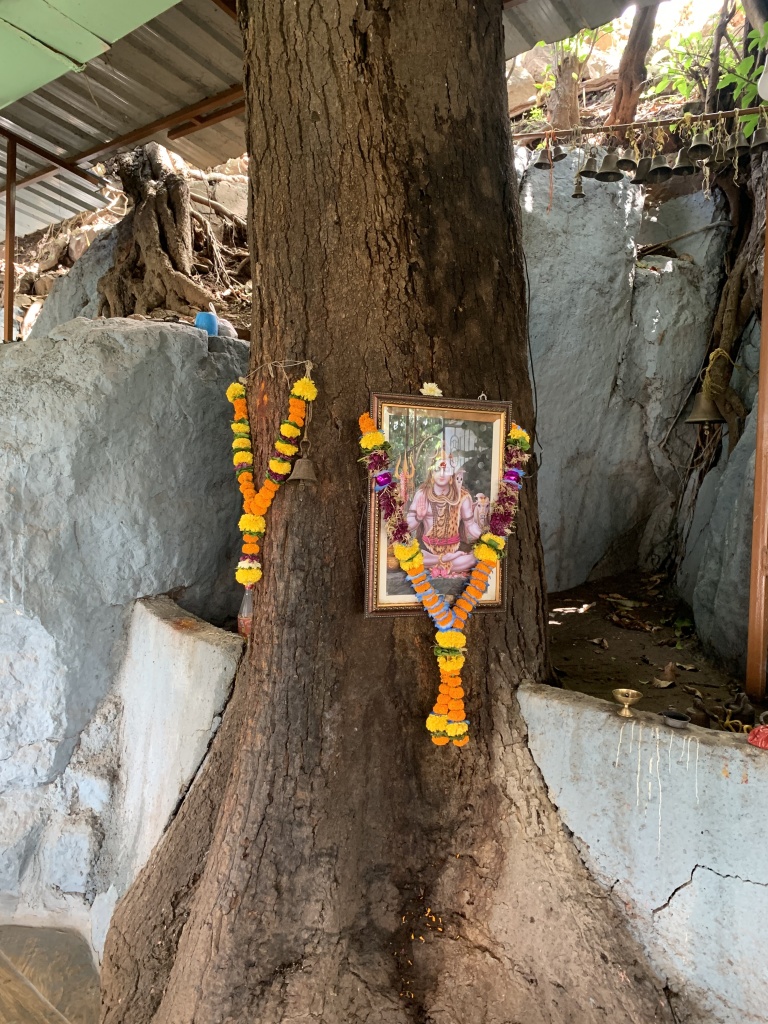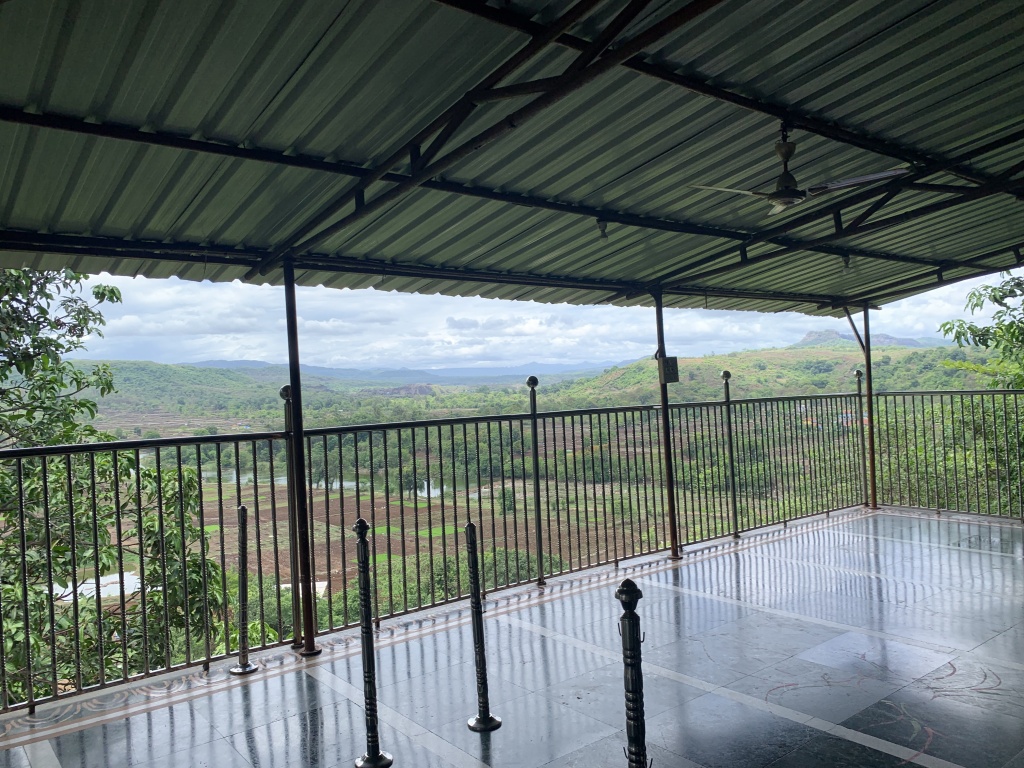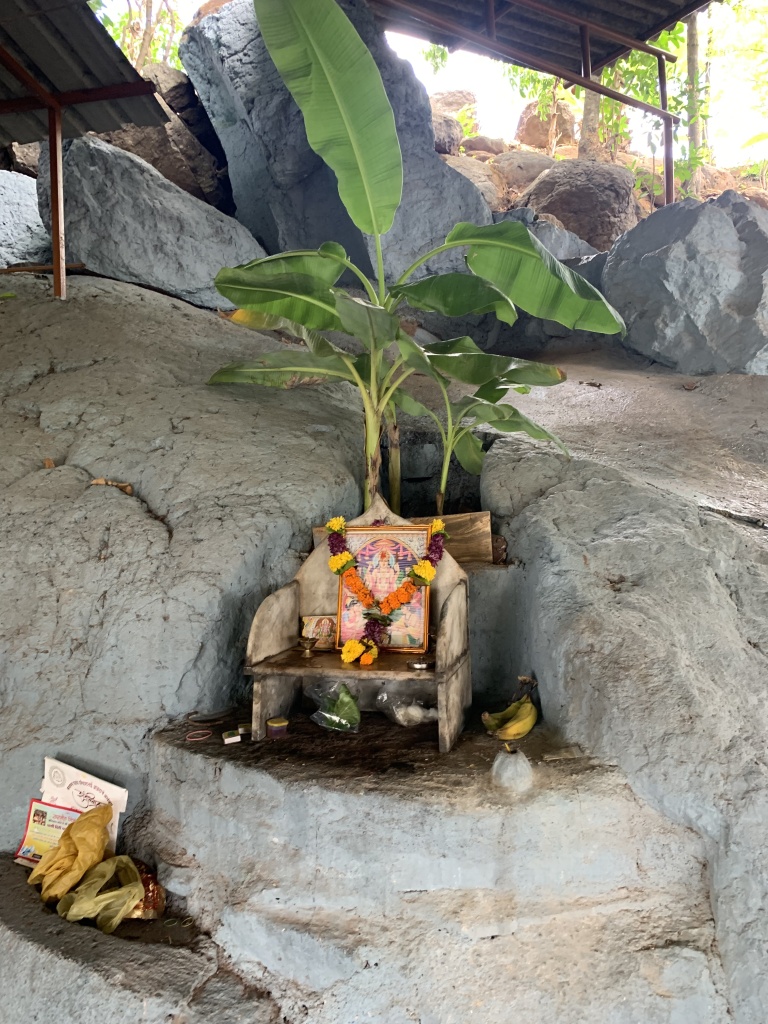Journey :
The journey towards Ashapuri mata temple located in Piplav starts by passing through NH48 where you will be crossing major cities like Vapi, Navsari, Daman and the ever crowded traffic jam hotspot between Ankleshwar and Bharuch. Once you cross these busy roads and countless traffic between Ankleshwar and Bharuch, NH48 will join NE1 (National Expressway 1) which is a new 2 lane strip connecting directly to Delhi. NE1 to NE4 is under construction but the National Expressway seems to be a narrow to call it as an expressway.
The road toward piplav is a countryside road with a narrow lane which bisects the agricultural fields and lush green trees on either side of the road. This narrow stretch of road is covered with flanks of neem and banyan trees on either side of the road. There is hardly any ongoing traffic but make sure you drive between 30-40 kmph since this stretch of road has its own sharp twist and turns. You will absolutely love riding this 15-20 kms of stretch towards Ashapuri Mata temple.

To reach the temple, you will need to cross the narrow street lanes and pass through ‘Piplav Pond’ or ‘Malataj lake’ as locals call it. Once you cross this, you will find huge parking space where you can park your vehicles. You will find lot of small shops around the parking space and towards the temple which sells food and Pooja materials. As you make way towards the entrance of the temple, you will find huge gates made of sandstone with “Shubh” and “Labh” written in Gujarati on either side of the entrance and “MAA” in big fonts with Trishul passing through it. You will need to climb 14 steps made of marble and there are separate lines for both men and women. Men’s line is highlighted in red board while women’s line is highlighted in blue board. To protect the devotees from heat and rain, the administration have built a rooftop covered with green shades made of plastic and ably supported by strong stainless steel frames.


As you move further toward the sanctum sanctorum of the temple you will find the statue of lion kneeling towards Ashapuri Mata. You will need to climb 3 more steps and you will find statues of Goddess Ashapuri mata.
History :
As per legend, Lord Krishna and Arjun took holy dip in the lake near the temple and hence came the name Narnarayana lake. During exile, the Pandavas reached here at Piplav village and dreamt to install the idol of goddess. They installed idol goddess Asha and after completion of Agyat Vyaas at Virat nagar they came back to same site and installed another idol of goddess Puri and hence the name “MATA ASHAPURI”.
Description of idol :
As you look inside the sanctum sanctorum of the temple you will find Ashapuri mata idols in bright red colour and with very big eyes. Ashapuri mata has long hair adorned with jewels and draped in colourful embroidered saree. The pillars around the idols are either made of gold or polished in gold paint but either way it looks pretty grand.
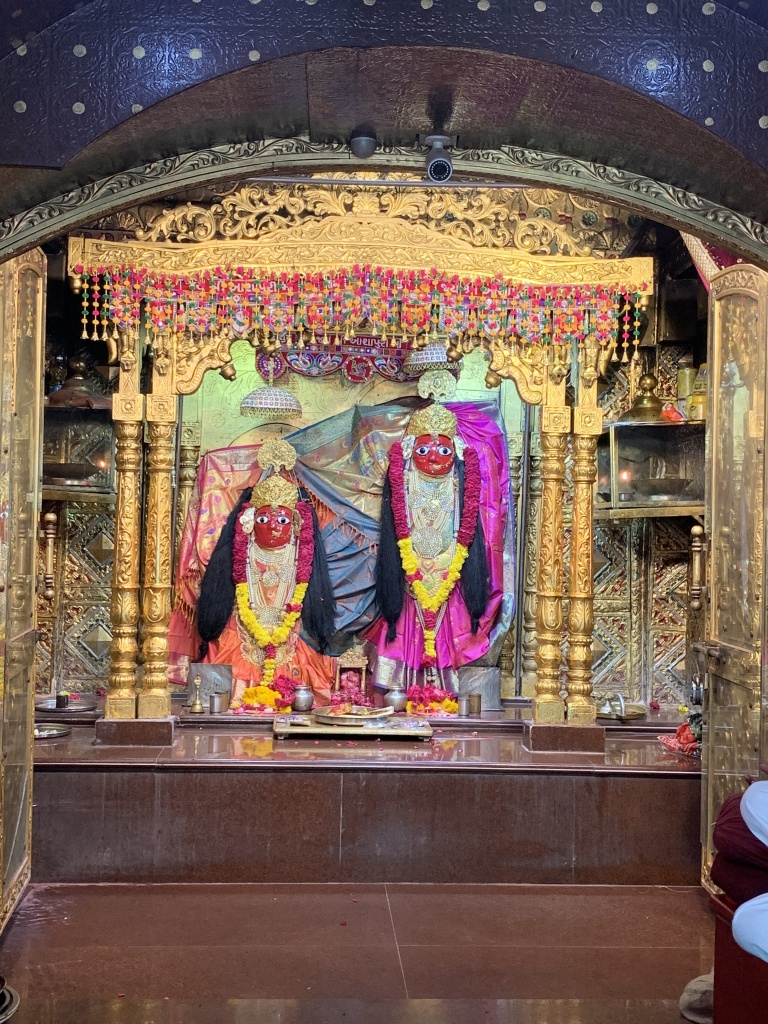
Food :
Just behind the temple, they have a small space with a capacity of around 30-40 people max. to have lunch. The cost of lunch is very nominal, priced at Rs.20/- per person. It’s a typical Gujarati thali but less extravagant. The thali contained 4-5 puris, mixed sabzi, rice daal and mohanthal (which is a sweet made of gram flour/ besan). The food is served in stainless steel plates and is enough to fill your stomach in one sitting. Also you will find family of cock and hen with their adorable babies moving around, so don’t forget to share a little bit of rice with them.
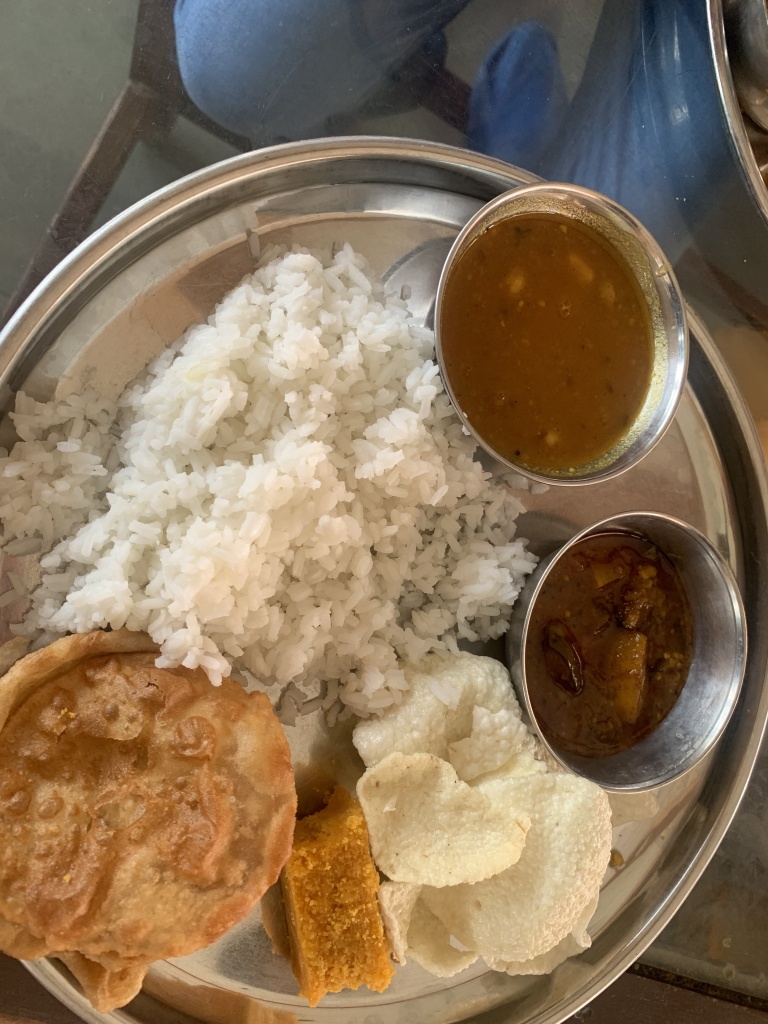
Overall, the temple is well built, is a must visit and is quite compact due to the space limitation but during Navratri it will be overcrowded for 9 days, so it’s better to visit during off season.
Temple timings : 06:00 AM to 08:00 PM.
